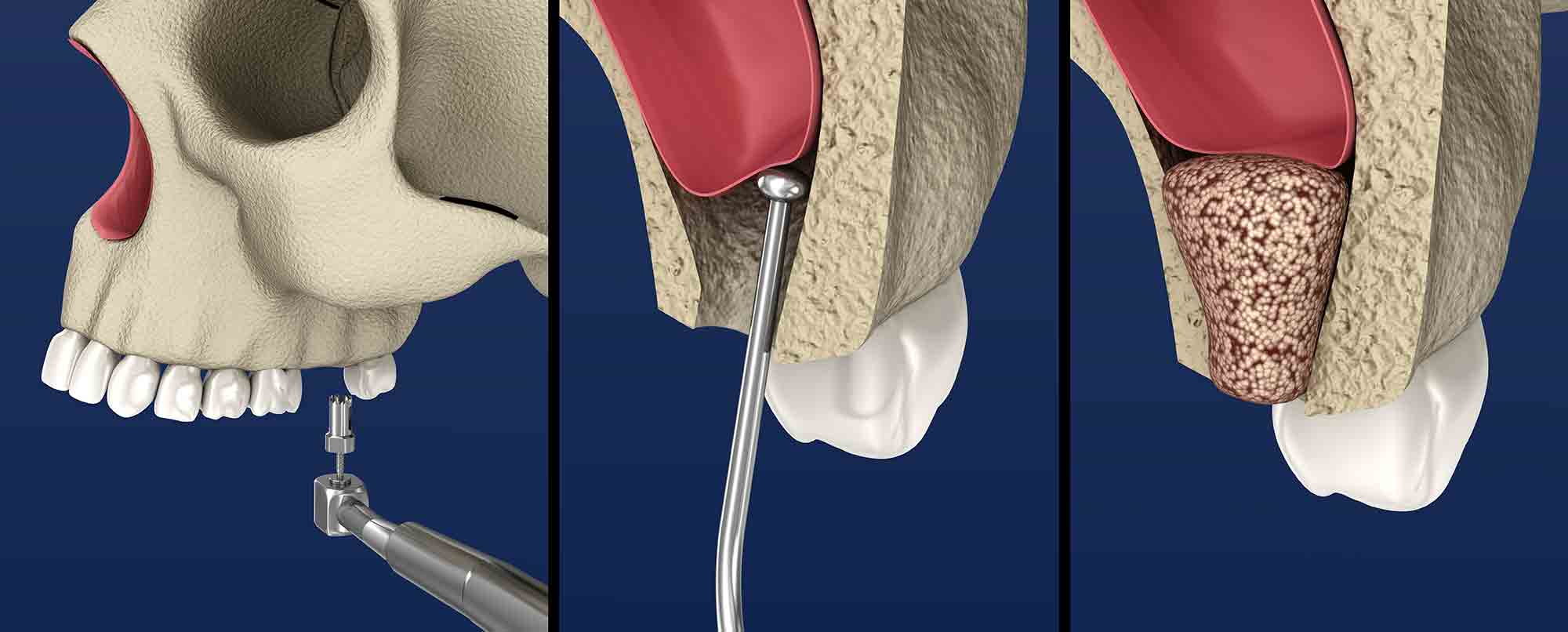Sinus Augmentation
Breathing Better = Sleep Better
A key to implant success is the quantity and quality of the bone where the implant is to be placed. The upper back jaw has traditionally been one of the most difficult areas to successfully place dental implants due to insufficient bone quantity and quality and the close proximity to the sinus. If you've lost bone in that area due to reasons such as periodontal disease or tooth loss, you may be left without enough bone to place implants.
Sinus augmentation, also known as sinus lift surgery, can help correct this problem by raising the sinus floor and developing bone for the placement of dental implants. Several techniques can be used to raise the sinus and allow for new bone to form. In one common technique, an incision is made to expose the bone. Then a small circle is cut into the bone. This bony piece is lifted into the sinus cavity, much like a trap door, and the space underneath is filled with bone graft material.
Finally, the incision is closed and healing is allowed to take place. In some cases, a sinus lift is performed at the time of implant placement. In others, the bone will be allowed to develop for about 4 to 12 months before implants can be placed. After the implants are placed, an additional healing period is required. Dr. Leja will work with you to determine which type of procedure best fits your individual needs.
Undergoing sinus lift surgery has been shown to greatly increase your chances for successful implants that can last for years to come. Many patients experience minimal discomfort during this procedure.

Signs you may need a Sinus Lift:
-
- Lost more than one tooth in the posterior maxilla.
- Lost a significant amount of bone in the posterior maxilla.
- Missing teeth due to genetics or birth defect.
- Minus most of the maxillary teeth and need a strong sinus floor for multiple implants.
